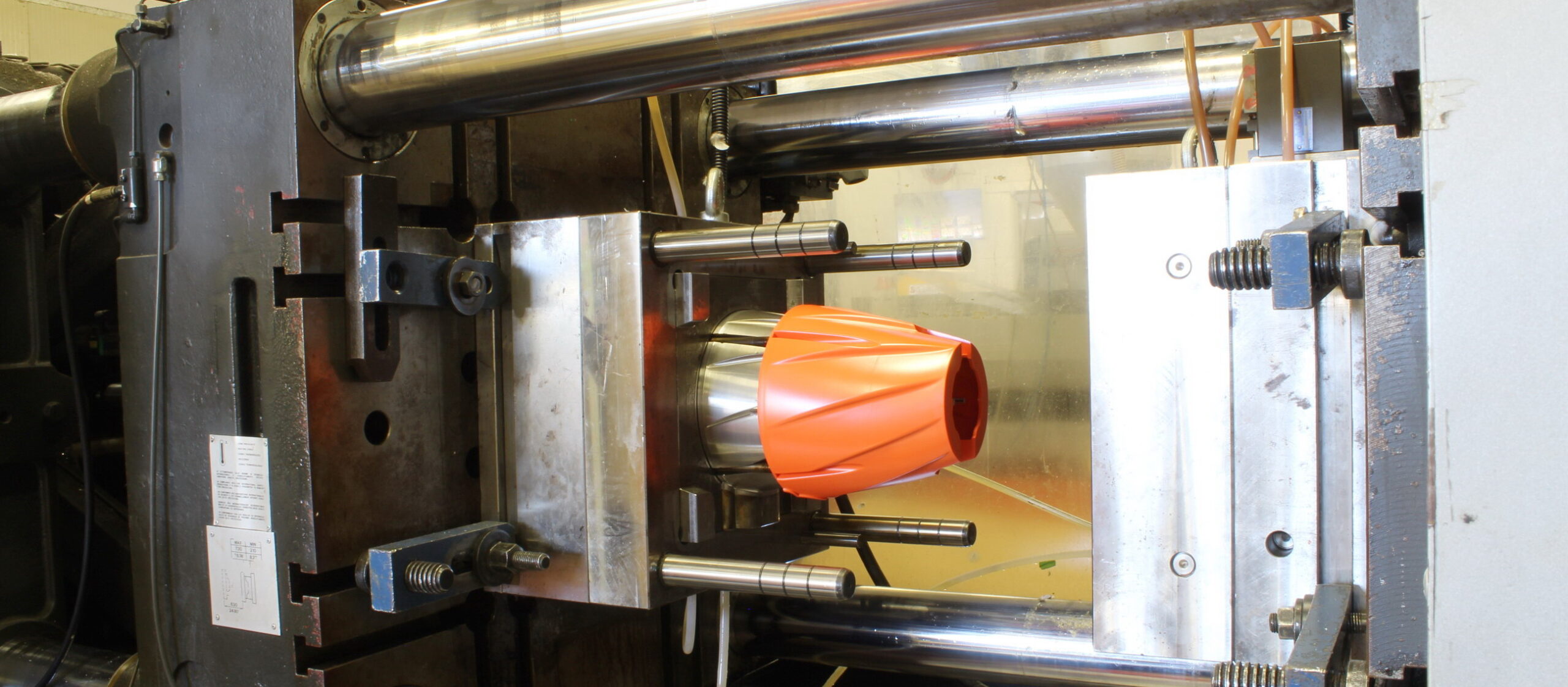WIDE RANGE OF INJECTION MOULDING MACHINES

What is injection moulding and how does injection moulding work?
Injection moulding along with extrusion ranks as one of the prime processes for producing plastic articles. It is a fast process and is used to produce large numbers of identical items from high precision engineering components to disposable consumer goods.
Most thermoplastics can be processed by injection moulding; the most common materials used include:
Acrylonitrile-Butadiene-Styrene ABS
Nylon PA
Polycarbonate PC
Polypropylene PP
Injection mouldings count for a significant proportion of all plastics products from micro parts to large components such as car bumpers and wheelie bins. Virtually all sectors of manufacturing use injection moulded parts. The flexibility in size and shape possible through use of this process has consistently extended the boundaries of design in plastics and enabled significant replacement of traditional materials thanks to light weight and design freedom.
How Does Injection Moulding Work?
Material granules for the part is fed via a hopper into a heated barrel, melted using heater bands and the frictional action of a reciprocating screw barrel. The plastic is then injection through a nozzle into a mould cavity where it cools and hardens to the configuration of the cavity. The mould tool is mounted on a moveable platen – when the part has solidified, the platen opens and the part is ejected out using ejector pins.
After a product is designed, usually by an industrial designer or an engineer, moulds are made by a mouldmaker (or toolmaker) from metal, usually either steel or aluminum, and precision-machined to form the features of the desired part..
Cold Runner vs. Hot Runner Molds
Plastic injection molding uses two different mold types: cold runner and hot runner. Each type has its benefits and drawbacks. The experts at The DS Group will help you determine which method is best for your project
Cold Runner Molds
The mold base of a cold runner mold typically has two or three plates held within it. Plastic is injected into the mold using a sprue. This plastic fills up the runners and travels into the mold cavity.
In two-plate cold runner molds, the runner system is attached to the mold, and an ejection system is in place to separate them.
In three-plate cold runner molds, the runner is separated on its own plate, so only the finished part will be ejected.
In both two- and three-plate cold runner systems, these runners can be reground and recycled. This process increases overall cycle times but also reduces plastic waste.
Advantages of cold runner molds include:
- Cost-effective
- Low maintenance costs
- Can use many different polymer resin types
- Engineered or commodity
- Facilitates fast color changes
- Improved cycle times when robotic assist is available to remove runners
Disadvantages of cold runner molds include:
- Slower cycle times compared to hot runner systems
- Increased waste if plastic runners aren’t recycled
Hot Runner Molds
Hot runner molds are built from two plates heated by a manifold system. The manifold heats the plastic, and then the mold cavities are filled with molten plastic via nozzles.
While a variety of hot runner systems exist, they can largely be split into two categories: internally heated and externally heated.
Internally heated hot runner systems offer better control of plastic flow.
Externally heated hot runner systems are best for polymers that are sensitive to changes in temperature.
Hot runner systems eliminate runners, so there is no need to recycle or regrind runner plastics.
Insulated runners are variations on the hot runner system which are used for injecting semi-crystalline polymers with low levels of thermal conductivity. Instead of using heat to keep the plastic in its melted state, the insulation on the runners keeps it from cooling.
Advantages of hot runner systems include:
- Less waste
- Potential for faster cycle times
- No need for automation to remove runners
- Can handle large parts
Disadvantages of hot runner systems include:
- Molds are more expensive to create
- Difficult to change colors
- High maintenance costs
- Higher potential downtime
- Often not suitable for thermally sensitive resins